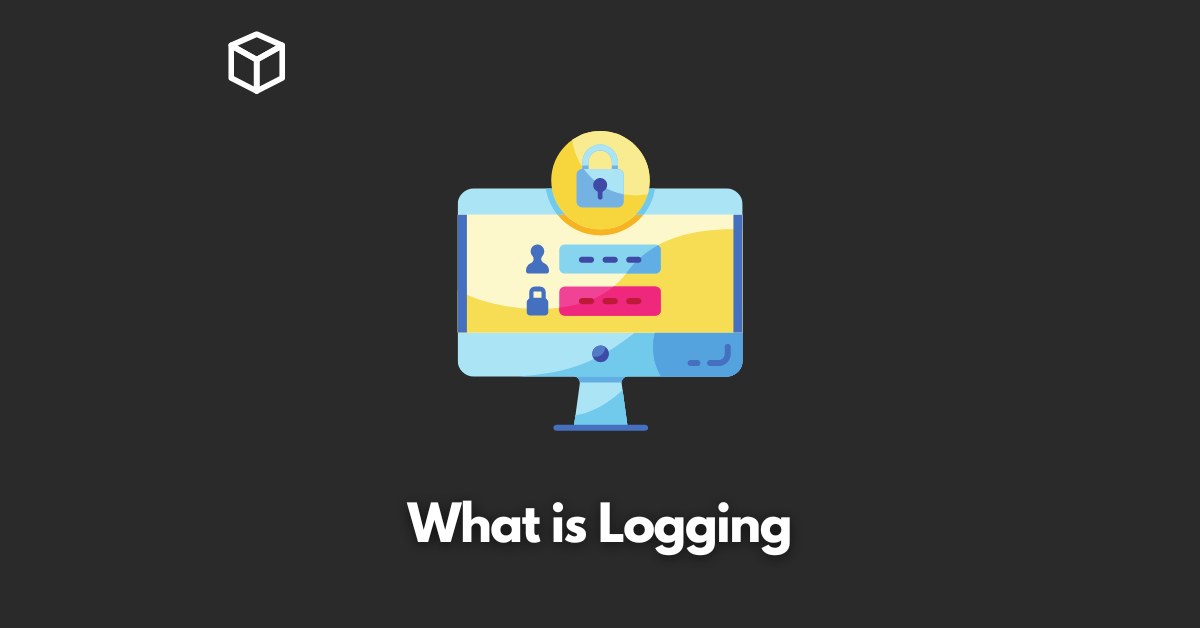In the world of software development, logging is a crucial process that helps developers understand the behavior of their applications.
Logging refers to the process of collecting and recording information about an application’s activity, such as errors, warnings, and other events.
The importance of logging in software development cannot be overstated as it allows developers to identify and fix issues, monitor performance, and improve the overall reliability of their applications.
There are several types of logs that developers can use to collect information about their applications.
These include system logs, application logs, access logs, and error logs.
System logs provide information about the operating system and its components, while application logs provide information about the specific application.
Access logs record information about user interactions with the application, and error logs record information about any errors that occur.
Setting up Logging in your Application
When it comes to setting up logging in your application, choosing the right logging framework is crucial.
There are several popular logging frameworks available, including Log4j, Logback, and NLog.
Each of these frameworks has its own set of features and advantages, so it’s important to choose one that best suits your needs.
Once you’ve chosen a logging framework, configuring it properly is the next step.
This includes setting the logging level, specifying the location of the log files, and configuring the log format.
It’s important to follow best practices when configuring your logging framework to ensure that you’re collecting the right information and that it’s easily accessible.
Logging in Different Environments
Logging in development is an important process that allows developers to identify and fix issues as they arise.
In development environments, it’s important to set the logging level to a high level, such as DEBUG or TRACE, to collect as much information as possible.
This allows developers to see exactly what’s happening in their application and quickly identify any issues.
When it comes to logging in production, it’s important to strike a balance between collecting enough information to troubleshoot issues and not overwhelming the system with too much data.
In production environments, it’s generally best to set the logging level to a lower level, such as ERROR or WARN, to minimize the amount of data collected.
In cloud environments, logging is even more important as it allows developers to monitor the performance and behavior of their applications in a distributed environment.
Many cloud providers offer services for logging, such as Amazon CloudWatch and Google Cloud Logging, which make it easy to collect, store, and analyze log data in the cloud.
How to analyze and interpret logs
There are several common log formats that developers can use to collect and store log data. These include JSON, CSV, and Syslog.
Each of these formats has its own set of advantages and disadvantages, so it’s important to choose one that best suits your needs.
There are also a variety of tools available for analyzing and interpreting log data. These include Logstash, Elasticsearch, and Kibana, which are part of the popular Elastic Stack.
Other popular tools include Splunk, Sumo Logic, and Loggly.
When it comes to analyzing and interpreting log data, it’s important to follow best practices.
This includes identifying patterns in the data, using filters and queries to narrow down the data, and visualizing the data to make it easier to understand.
Conclusion
In conclusion, logging is a crucial process in software development that allows developers to understand the behavior of their applications and identify and fix issues.
It’s important to choose the right logging framework and configure it properly, as well as to strike a balance between collecting enough information to troubleshoot issues and not overwhelming the system with too much data.
Logging in different environments, such as development, production, and cloud environments, requires different approaches to ensure that the right information is collected and that it’s easily accessible.
Additionally, analyzing and interpreting log data requires the use of common log formats and tools, as well as following best practices for identifying patterns, filtering and querying data, and visualizing data.




